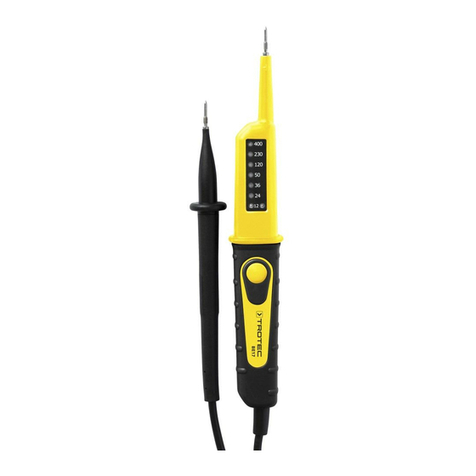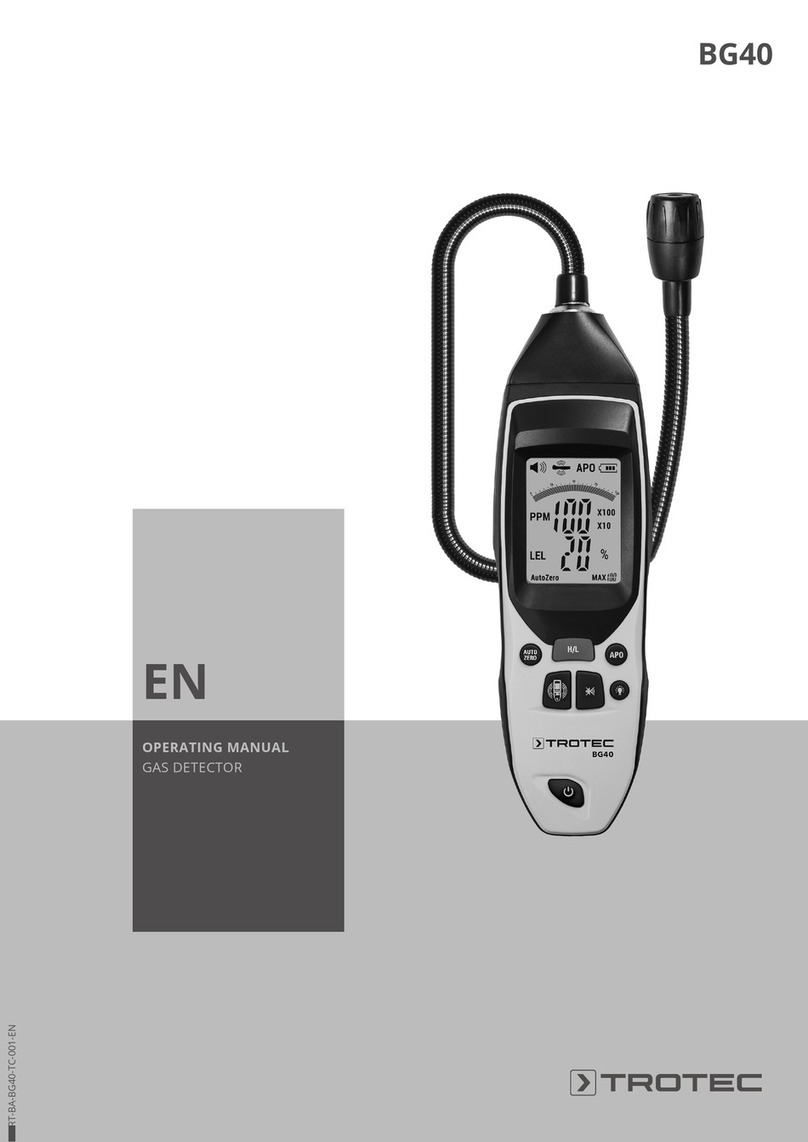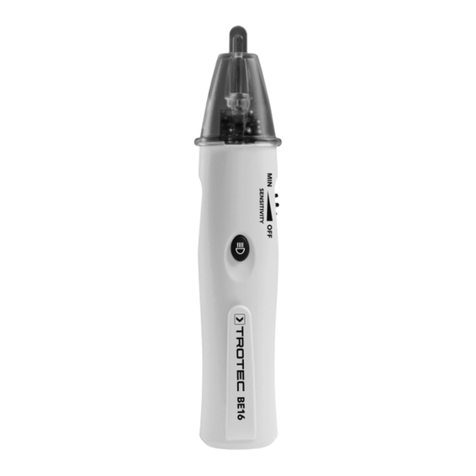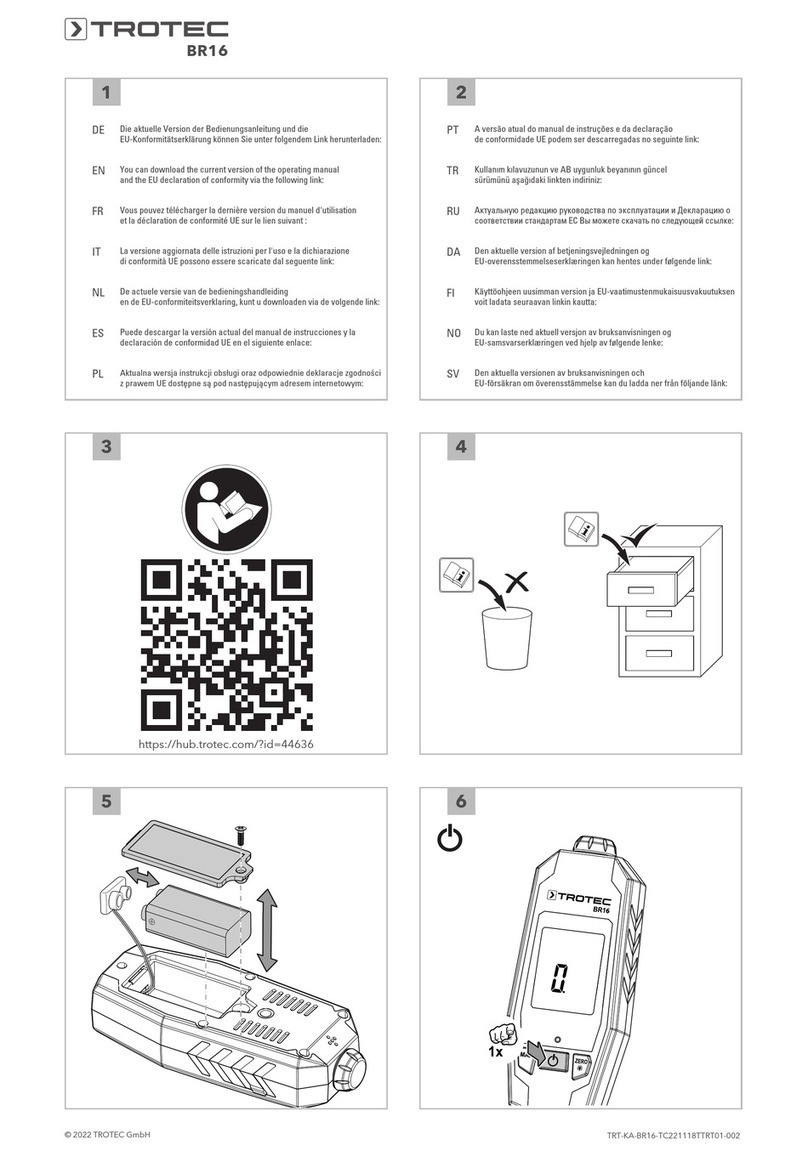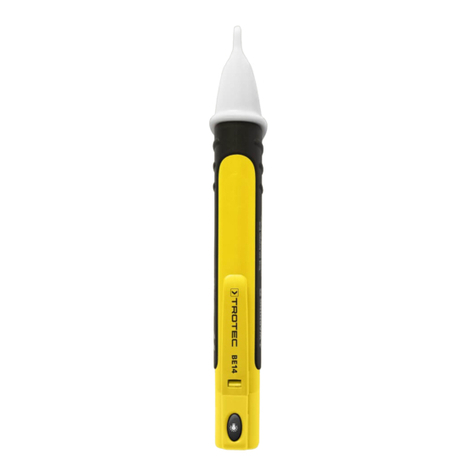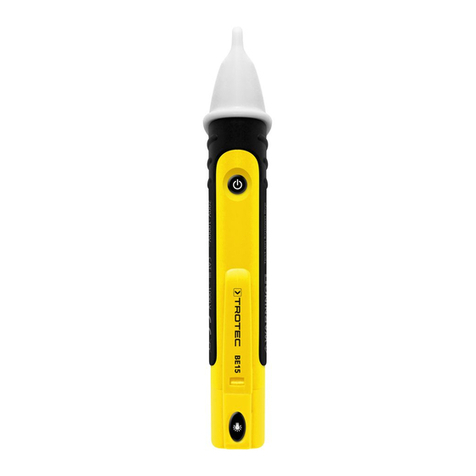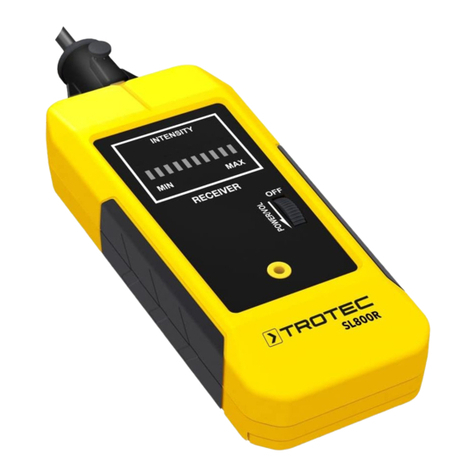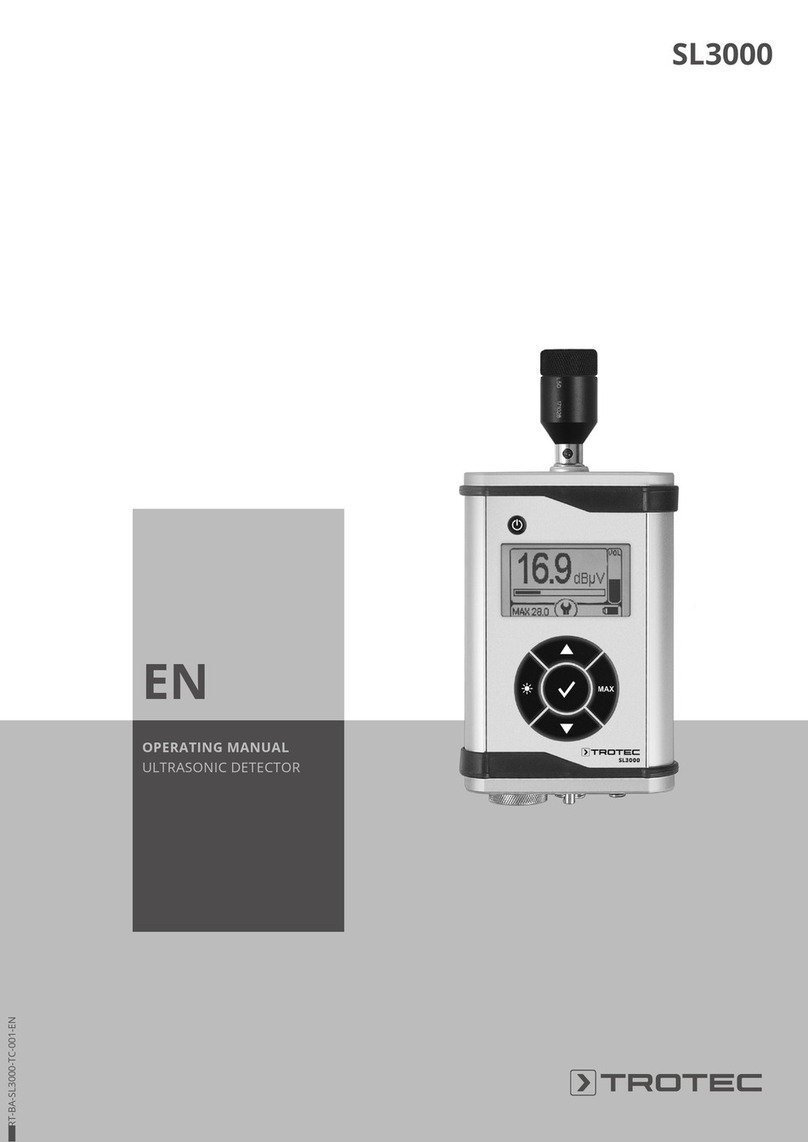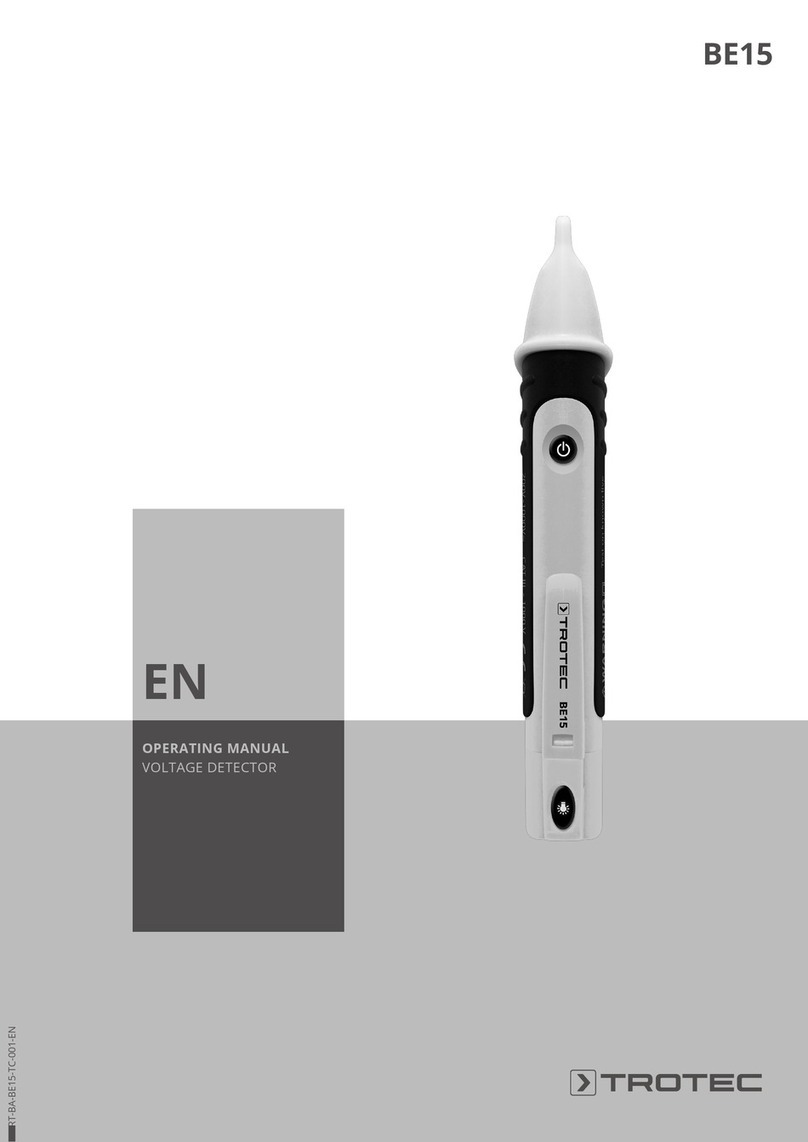
EN 3
voltage detector BE20
• For technical reasons, the device cannot display
DCvoltages within the range of approx.0V to 8V.
• Check the device for proper functioning before and after
each use. The device must not be used if any of the
LEDindicators does not function correctly or if the correct
functionality of the device cannot be clearly recognized.
• Observe the maximum permissible duty cycle of
30seconds for voltage detection. The device must never
be applied to voltages for more than 30seconds.
• For technical reasons, the device must not be operated for
10minutes after each voltage detection. The device may
only be used again for the next voltage detection after the
rest period of 10minutes has elapsed.
• After each use, screw the supplied test probe protectors
onto the two test probes to prevent injuries.
• Depending on the internal impedance of the voltage
detector, the device may either indicate "operating voltage
present" or "operating voltage not present" if an
interference voltage is present.
• A voltage detector with a relatively low internal impedance
will not indicate all interference voltages with an initial
value above ELV, compared to the reference value of
100kΩ. Upon contact with the system parts to be checked,
the voltage detector may temporarily reduce the
interference voltages by discharging to a level below ELV;
however, after the voltage detector has been removed, the
interference voltage will assume its original value again.
• If the "voltage present" indication does not appear, it is
highly recommended that you insert the earthing device
before starting work.
• A voltage detector with a relatively high internal impedance
will not clearly indicate "operating voltage not present" if
an interference voltage is present, compared to the
reference value of 100kΩ.
• If the "voltage present" indication appears for a part that is
considered to be disconnected from the system, it is highly
recommended that you take additional measures (e.g.
using an additional suitable voltage detector, visual
inspection of the disconnection point in the electric
network, etc.) to check the "operating voltage not present"
state of the system part to be checked, and to make sure
that the voltage indicated by the voltage detector is an
interference voltage.
• A voltage detector indicating two internal impedance
values has passed the design test for handling interference
voltages and– within the technical limits– is able to
differentiate between operating voltage and interference
voltage, and to directly or indirectly indicate the existing
type of voltage.
• Observe the storage and operating conditions as given in
the Technical data chapter.
Intended use
Only use the device to indicate voltage ranges between 12 and
690V DC or 12 and 400V AC whilst adhering to the technical
data. The device may be used in facilities of overvoltage
category3 (CATIII= domestic installations).
Note
When used as a bipolar voltage detector, the voltage
detector operates without battery supply. For all other
functions, two microbatteries of type 1.5V AAA must
be inserted into the voltage detector.
To use the device for its intended use, only use accessories and
spare parts which have been approved by Trotec.
Improper use
Do not use the device in potentially explosive atmospheres,
when wet or very humid.
Unauthorized modifications of the device are forbidden.







